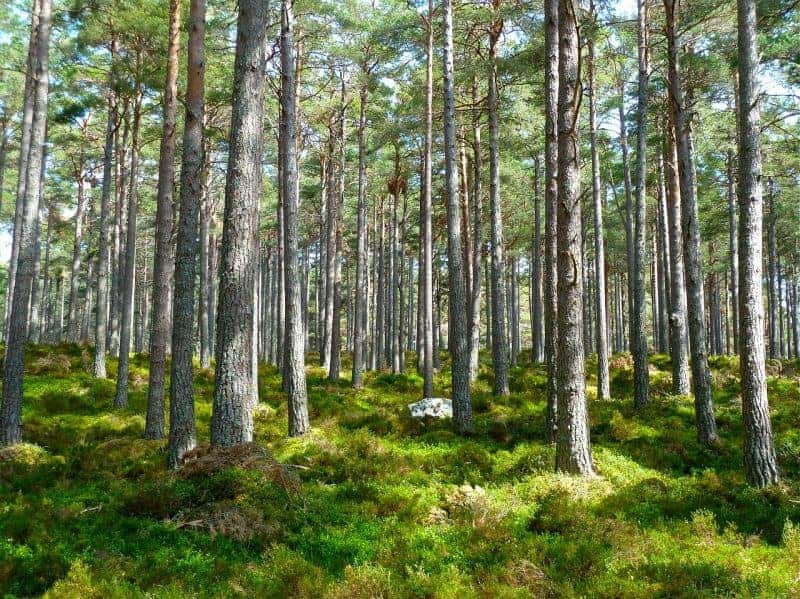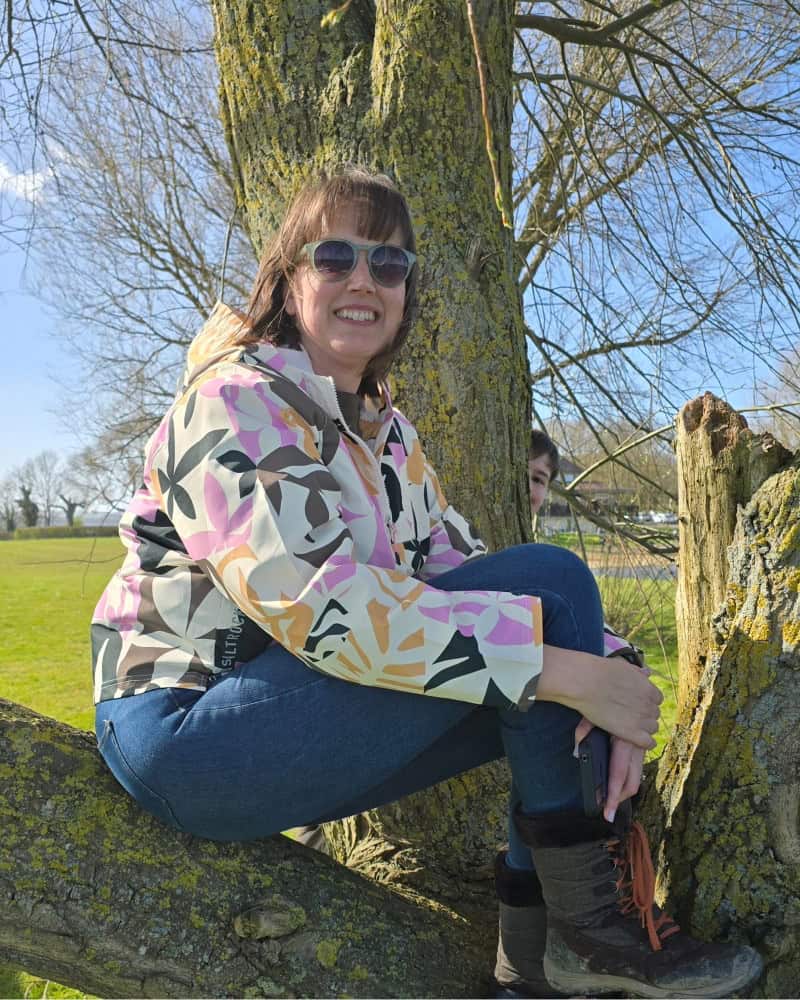On average, £3,500 worth of a child’s wardrobe ends up in a landfill. Although babies and children grow out of their wardrobes unsurprisingly quickly, many clothing items that get thrown away have barely even been worn. In total, a third of clothing goes to landfill, losing all its value. This is according to research carried out by the environmental charity Hubbub.

With the increase of fast fashion in the adult and children’s fashion industry, we are often fed the relentless message to buy more and keep up with the latest trends. However, keeping pace with this fast fashion mindset is initiating and sustaining a throwaway culture, increasing waste and pollution. Disposable fashion is not only having negative effects on the weight of our purses, but the true cost of clothing is having a devastating effect on our environment.
Brands with the environment at heart, such as Fair Indigo and Acorn & Pip, want to celebrate World Environment Day with a discussion, reflecting on how we as parents can initiate a conversation and encourage sustainable fashion, upon which our children will take the lead, and our actions can impact the world. By doing this, we hope to inspire the next generation of children to learn, engage and value the environment that they inherit from us: their parents, families and role models.

To kick off the conversation, we spoke to the inspiring parenting blogger Becky Gower (The Mummy Adventure), who said, ‘I have tried to become more mindful when shopping for my children, and instead of choosing fast fashion from the high street and supermarkets I have invested in ethically created and often organic pieces online. As well as getting to support small businesses, which is something I am passionate about, I know that the outfits I am buying are made responsibly and designed to last. It means things can get passed down from child to child and then on to another family once we are done, rather than being binned because they are misshapen and bobbly. I also buy second-hand because I know buying good quality pre-loved pieces means I have even less of a footprint.
Fast fashion in childrenswear means that often our children are wearing clothes that another child ends up making. It means that parents purchase items knowing they will be thrown out at the end of their wear, and they buy more than they need because the prices are so low.’
We want the very best for our world’s children, and I often reflect on the legacy that we are leaving to them. However, we don’t always think about our environmental footprint’s value at the top of that list. Reduce, Reuse and Recycle; Doing these small things with great love can help build a cleaner environment for our children to thrive in. It’s not always easy to be mindful of the environment as life often gets too busy, but the discussion we’ve had with other mums shows that it is essential.
Emma Harris, compelling lifestyle blogger and stylist (A Quiet Style), states, ‘as a parent, I feel I have a responsibility to be mindful of the environment; after all, I want my children to grow up in the best world possible. Although I’m definitely not perfect, I consciously do what I can. When it comes to my children’s clothes, I tend to buy ethical and slow fashion; yes, it is more expensive initially. But because it is better quality, I actually sell most of it on eBay once it’s been outgrown by both of my girls, so it doesn’t cost much more than the high street in the long term. Anything I don’t sell is handed on to friends. I don’t think you could do that with fast fashion, as it just doesn’t last. Buying this way also means I am usually supporting independent brands, which I try to do where possible.’
Recently Fashion Revolution Week encouraged consumers globally to ask the important questions of where our clothes come from and who has made them. Sharing these stories has developed further transparency into the nature of the fashion supply industry, raising awareness of the true life cycle of our clothing purchases.

The sensational Jess Bowen (Model Mother), who is from a fashion background herself, suggests ‘having seen the inner workings of high street stores and witnessed the pressure that designers and garment technologists endure to cut corners and drive the manufacturing price down to make a greater profit or provide cheaper goods leaves a bad taste in your mouth. It’s so obviously unethical, and it’s a shame that we’re conditioned to turn a blind eye to save a couple of quid only to discard something we’ve only worn a couple of times.’
As a brand, we recognise the growing importance of responsible innovation, offering organic products to parents conscious of both style and sustainability. According to Hubbub, one in three parents admit to throwing away their baby’s clothes because they don’t know what else to do with them. Therefore, more value is starting to be placed on selecting quality items that withstand the test of time, not just quantity, and of course, this is about toys too! Modern mum Polly Geal (Polly_Loves) states, ‘I don’t buy an excess of clothes for my children. Since my son has been in school, his non-uniform wardrobe has shrunk considerably because there’s no need for more than a few items now. I buy fewer pieces and choose versatile clothes that will withstand the wear and tear required of them and can also be mixed and matched with other pieces in my wardrobe without overthinking. I favour classic and traditional clothes that don’t scream ‘trend’ but instead feel more timeless. I opt for natural fibres for the kids too. I’d say 99% of their clothes are cotton, wool or linen.’
Reducing, reusing, and recycling are simple steps that we can take to support our environment and initiate care in our consumption. For example, Unisex clothing has recently begun to revolutionise the fashion industry, breaking the boundaries of specific gender-orientated clothing and reducing environmental impact. Particularly for parents investing in unisex children’s clothing, it has allowed a convenient way to recycle and reuse clothes from one little one to another, extending that garment’s lifespan.
Jess Bowen (Model Mother) suggests, ‘I can only hope that some of the items I’m choosing for my daughter now are deemed precious enough to keep for the next generation too. The same goes for toys and baby furniture. The idea of heirloom pieces really appeals to me.’

Organic cotton has also proven to provide many benefits to both the earth’s ecosystem and our health due to reducing toxic chemicals. In organic cotton production, there is a 98% lower impact on water pollution than in non-organic cotton. Choosing to clothe with organic cotton reduces the risks associated with exposure to toxic pesticides that can irritate our children’s skin. We caught up with the super inspiring Kelly Taylor (Kelly.d.allen), who said, ‘I have started only purchasing ethically made and sourced clothing for the kids and also thrifting more than I have in the past. There are SO many good kids’ clothes that are gently worn at thrift stores. The quality vs the price you pay for fast fashion children’s clothing is absurd. They don’t use sustainable and eco-friendly materials because they want to keep their cost down; in turn – the clothing does not hold up for more than a few years, and you’re left with an overly expensive item with holes in it because you tried to wash it.
The market is overly saturated now with the focus on social media and always have the one up on your competition – which drives retailers to use whatever materials they can to get items out to the public. It’s the consumer’s responsibility to educate themselves and put pressure on children’s clothing providers to up their game and turn things around. I think that change is slowly happening.’
Polly (Polly_Loves) continues, ‘I think fashion in general, not just kids, is very seasonal now. People like to jump on trends because it makes them feel current, relevant and aware of fashion. Children aren’t an accessory, though and dressing them, whilst it can be an extension of our own identity, should be more about comfort, practicality and durability as much as it is about an aesthetic. My daughter’s clothes, in particular, are versatile – she wears most pieces in her wardrobe across seasons – I accessorise differently. A dress can be paired with tights in the winter, bare legs in the summer, a blouse layered over the top and under a wool cardigan in the cooler months or bare arms in the warmer ones. Choosing clothes that can work through all four seasons makes sense for me – financially, it’s a no-brainer, and there is far less wastage when you get a year’s worth of mileage from each item. I also remodel pieces when they get worn down – my son’s jeans recently had holes in the knees, so I cut them to make summer shorts.’
Our loving actions can help our children understand the importance, as Jess Bowen (Model Mother) proposes beautifully, ‘to make informed choices, knowing the bigger picture.’ But also ‘to know that style is innate and is about more than appearances; about how what you surround yourself with makes you feel.’
By consuming less but better, we can gain greater value for money in children’s clothing that has both durability and versatility and gives a warm hug to our planet.
#changemyfootprint
Follow Acorn & Pip on Instagram: @ACORNANDPIP


